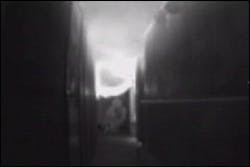Fire Attack and the Thermal Imager
Fire suppression: it’s the job most commonly associated with a firefighter. When lives and property are at risk, firefighters extinguish the fire to bring control and safety back to a situation. This month’s training column examines how firefighters can use their thermal imagers (TIs) to perform this essential task more quickly, efficiently and safely.
Essentials
This series of columns has repeatedly emphasized the importance of using thermal imagers as frequently as possible. Not only does frequent use enable firefighters to become more comfortable with interpreting images, but it also makes their operations safer and more effective. During fire attack, a TI can show thermal layers, a safe path for advancement, alternative exits and the location of the heaviest fire. In short, a TI can lead firefighters to their goal faster and safer.
When using a thermal imager in support of fire suppression, consider the following:
- A TI can assist in fire attack only if it is on scene when the first line is stretched. If your thermal imager is arriving on the third or fourth fire company, it cannot help in fire attack. Deploy your TIs so that they arrive as early as possible.
Practice Makes Perfect
One of the biggest challenges in using the TI for fire attack is coordinating TI usage with hoseline advancement. Short company drills can help perfect operations as well as build comfort with TI deployment. After parking the apparatus outside the firehouse, the company can practice stretching dry attack lines into the apparatus bay. Firefighters can be assigned to specific seats to ensure that each firefighter gets practice leading out the attack line, or backing up the line while carrying the TI. Have the hose team practice advancing the line and simulating area scans with the TI.
Remember, as the team advances, the person using the TI cannot stare at the TI display the whole time. He will use the TI to orient himself and the team, then sling (or otherwise secure) the TI while he helps advance the line. For three- and four-man companies, his assistance on the line is especially important. Be sure the TI user shares his observations verbally with the rest of the company; there is a natural human instinct to assume that others see what you see. The TI user needs to describe the scene to the rest of the company.
Table Talk
After practicing hoseline advancement with the TI, discuss some of the unique fire risks in your response areas and how they might affect your hose advancement. Are there structures that might require you to bring additional tools along, such as bolt cutters? Do you have to reassign tools to ensure that the special tools, as well as the TI, make it into the structure? Can the TI person carry the extra tools as well, and still advance the line? How are the extra tools carried to ensure that the TI is easily accessible?
Some of these issues should be addressed in the standard operating guideline for the TI, but SOGs cannot cover every contingency. Plan for the special hazards and challenges of your response area.
Final Report
Your TI can be a vital tool for extinguishing any fire, not just those that are hidden or difficult to locate. Proper use and image interpretation can help firefighters advance more quickly and more safely into the structure, as well as find and extinguish the fire more efficiently. Advancing a hoseline requires teamwork, and if a team member is uncomfortable carrying the TI, he may not function effectively. Ensure that all members are comfortable carrying and using the TI as part of their assignments, and that they can do so while still helping the nozzleman advance into the structure.
For further information on using a TI during fire attack, visit the Technology section of Firehouse.com.
Jonathan Bastian is the former thermal imaging training manager at Bullard. He is certified as a thermal imaging instructor by the Law Enforcement Thermographers’ Association (LETA), the international public safety organization specializing in thermal imager certification and training. He is also a member of the NFPA Technical Committee on Fire Service Training. Educated at Brown University and licensed as a high school teacher in Illinois, Bastian served 12 years on the North Park, IL, Fire Department, including the last three as a captain. As health and safety officer, he led the development and implementation of the department’s rapid intervention team SOG. Bastian is a certified Fire Instructor I and Firefighter III, and he spent 12 years as an EMT-I/D. He has taught classes on thermal imaging, rapid intervention teams, and search and rescue operations. Bullard is happy to answer any questions about thermal imaging; contact the company at [email protected].
Related:
- Thermal Imaging Training: Fire Attack (online feature)
